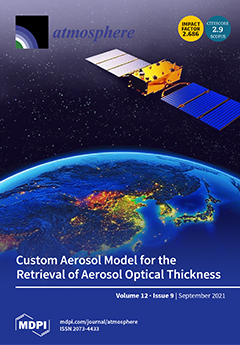Efficient environmental policies are necessary in the improvement of air quality and reduction in carbon emissions, and the interactions between policy, activity, emissions, and environment comprise a cycle allowing the evaluation of the effects of implemented policies. Based on the establishment of the
[...] Read more.
Efficient environmental policies are necessary in the improvement of air quality and reduction in carbon emissions, and the interactions between policy, activity, emissions, and environment comprise a cycle allowing the evaluation of the effects of implemented policies. Based on the establishment of the connection between environmental parameters and policy context using a quantifiable methodology, in this study, we formulated a rapid and simplified pattern for the evaluation of the effects of policies concerning the atmospheric environment, and applied it to the evaluation and improvement of policies for Carbon dioxide (CO
2) reduction and air quality enhancement in the sample city of Shenzhen. The Response Surface Model-Visualization and Analysis Tool (RSM-VAT) in the Air Benefit and Cost and Attainment Assessment System (ABaCAS) was applied as the core tool. The required reductions in Fine particulate matter (PM
2.5) and Sulfur dioxide (SO
2) emissions for 2014–2019 are expected to be achieved; however, the expected reductions in Nitrogen oxides (NO
x) emissions (mainly from road mobile sources) and Volatile organic compounds (VOCs) emissions (mainly from secondary industry and road mobile sources) are less certain. According to the simulated concentration of PM
2.5 in 2019, it is necessary to reduce the concentrations of air pollutants, both within and outside Shenzhen. The background weather conditions may be the main reason for the increased concentrations of Ozone (O
3) in October compared to those in July. Reductions in NO
x and VOCs tend to be the main factors driving changes in O
3 concentrations. Policies have been formulated and implemented in a wide array of areas. According to the quantitative comparative analysis of the policies, and the relevant activities, the greatest challenge in reducing NO
x and VOCs emissions is presented by the oil-powered vehicles in the road mobile sector and organic solvent production in the secondary industry sector. Therefore, in an effort to achieve better air quality and ensure that CO
2 emissions reach a peak in Shenzhen by 2025, we propose key improvements in policies based on interdisciplinary cooperation, involving not only atmospheric and environmental science, but also governance and urban planning.
Full article





